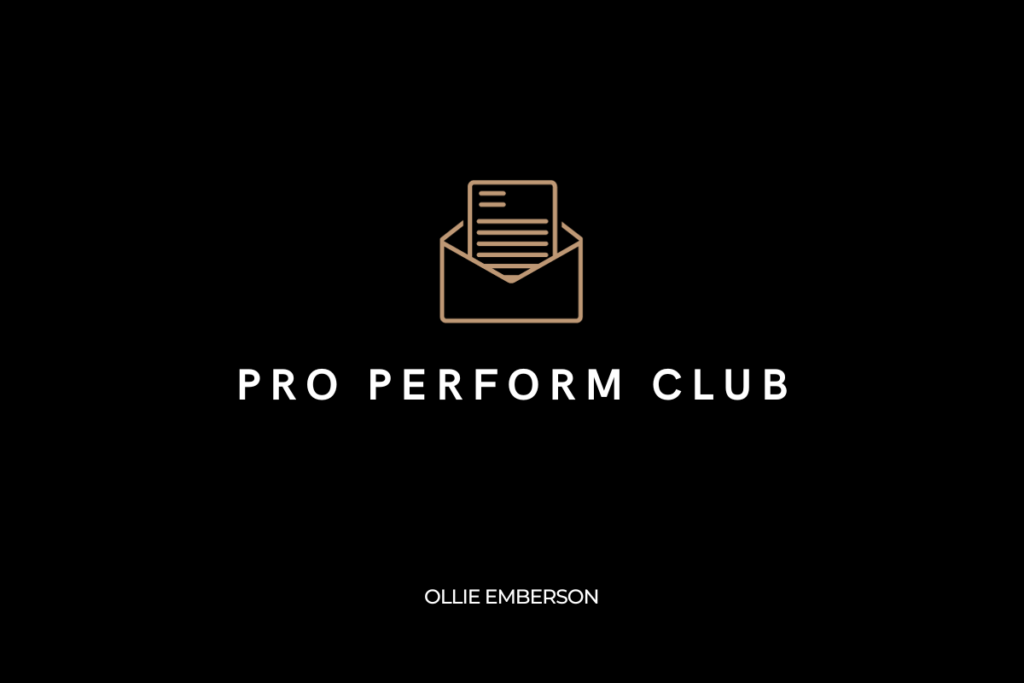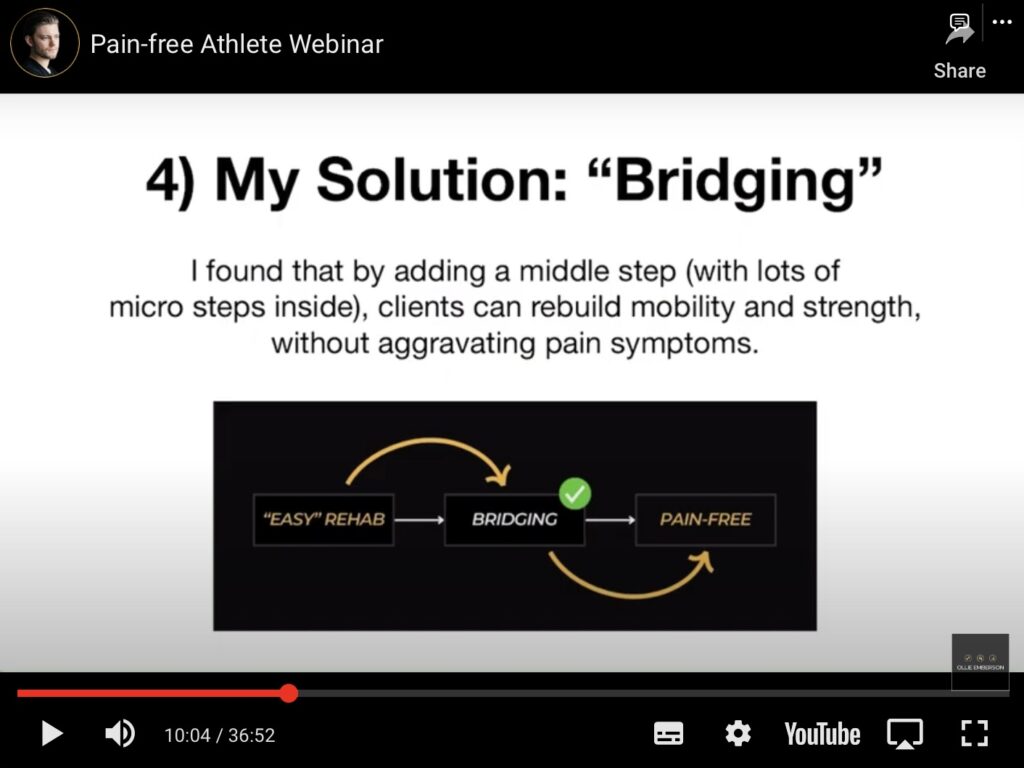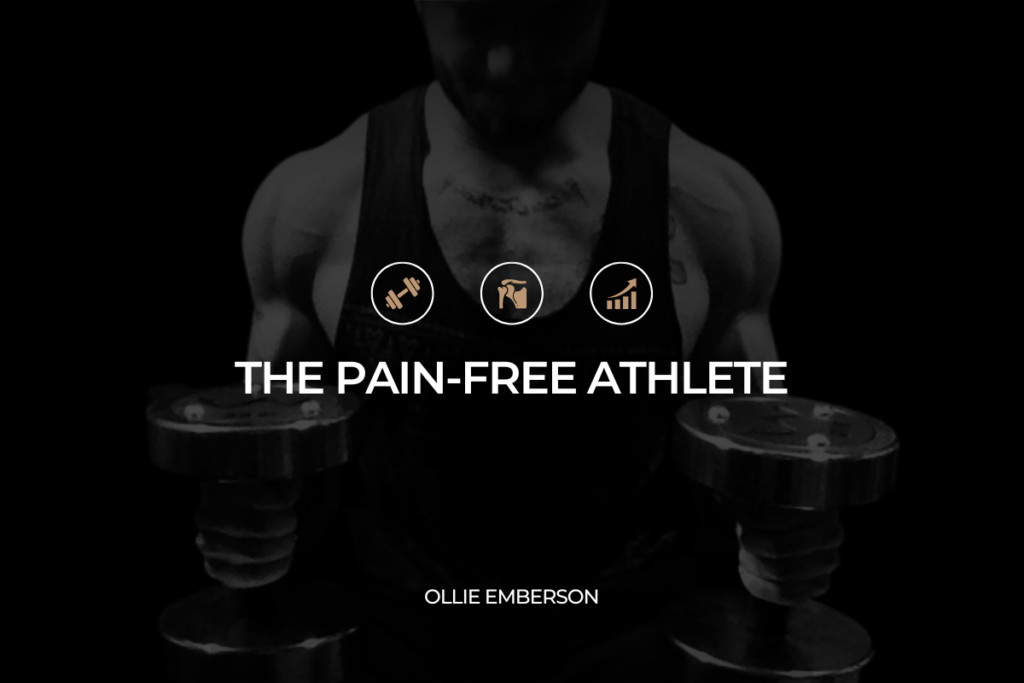Whats up my friend,
How you doing?
If we haven’t met properly I’m Ollie:
I fixed my own “unfixable” 2014 shoulder injury after DISAPPOINTING results with physios, chiros, osteos, surgeons, stretching, “rehab” exercise, massage therapy, acupuncture and dry needling.
That experience inspired me to become an elite performance & injury rehab consultant for:
- Competitive athletes
- Fitness professionals
- Health executives
(In other words, people who know their sh*t when hit comes to training)
I use a mix of physics and anatomy (big brain exercise stuff) to help them 1) move 100% pain-free and 2) reach their physical potential: so they can look, feel and perform at their best.
Anyway, enough about me – here’s the 3-part triage system I use to get my shoulder rehab clients started…
Hope it helps 🙂

“Full range of motion” does NOT mean “as far as possible”.
Why?
Because your range of motion is unique, and it will depend on 1/ your anatomy, 2/ muscle weakness you may have & 3/ your nervous system (that “tightness” you feel = your nervous system trying to protect you).
What many don’t realise is this – You have TWO types of “range of motion”.
1/ Active ROM (aka. Functional mobility)
2/ Passive ROM (aka. Non-functional flexibility)
When exercising, it’s VITAL to say in an active range (ie. A range you can GET into yourself through contracting muscle) – going beyond this can result in pain, further injury, joint and bone damage.
Here are 3 (of 9) mobility tests I do with clients:
1/ Horizontal Extension (relates to bench press)
2/ Arm flexion (relates to pulldowns)
3/ External Rotation (relates to shoulder press)
And here’s what they look like 👇
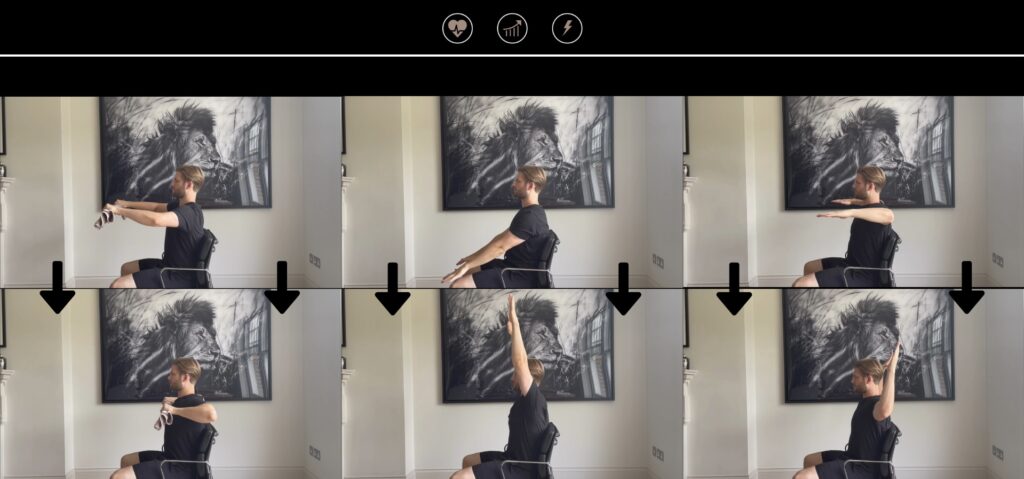
Ps. During exercise, do NOT allow yourself to be pushed FURTHER than the ranges you achieve in these tests.

Here’s where it gets interesting – because assuming your injury is a muscular problem, exercise is the ONLY thing that will help you recover and move pain free…
See, if weakness = the problem,
It makes sense that “strengthening” = the solution.
This is why resistance training is so effective…
But what about:
- Stretching?
- Acupuncture?
- Dry needling?
- Foam rolling?
Well, there’s a reason why so many people say “I tried this and it helped for a while… until my pain came back”
Truth is, stretching, acupuncture, dry needling and foam rolling reduce short term pain (it’s a “nervous system thing”), but they don’t solve the underlying problem by strengthening weak muscle.
But the exercises below? They’ll be a GREAT start for you:
1/ Lat Row
2/ Chest Fly
3/ Bicep Curl
4/ Reverse Fly
5/ Lateral Raise
6/ Tricep Extension
Do these 3x/week, start with 2 sets of 8 reps – and INCREASE weight as you get stronger.
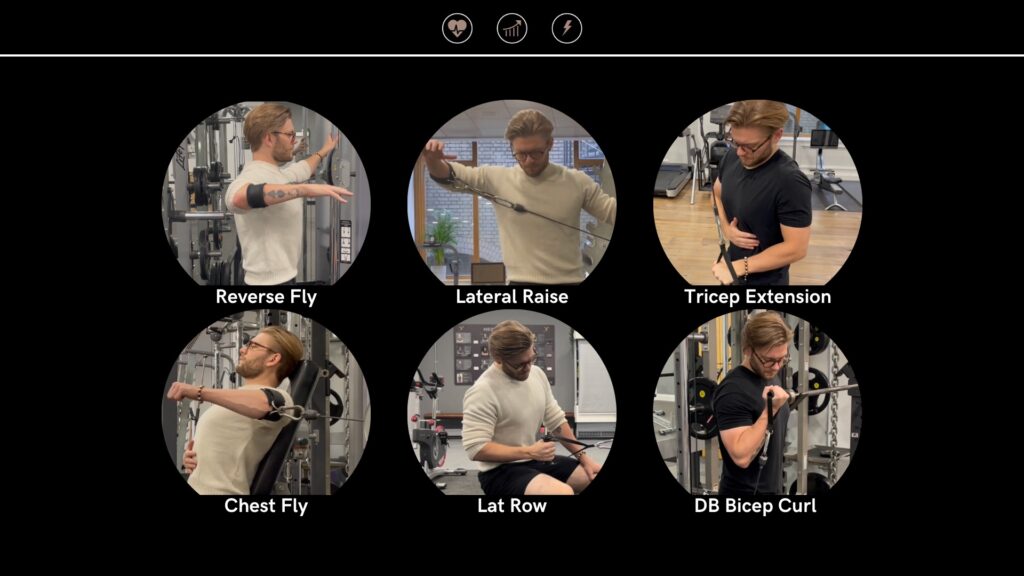
Ps. Do NOT ignore the cuffs and cables in the images. These are not optional, they are an ESSENTIAL part of these exercises and have been designed to reduce your pain and speed up progress.

You’ve taken the time to do the mobility assessment and do the correct rehab exercise, so the LAST thing you want is something else coming along to fuck up your rehab efforts.
This is where the program audit comes in…
You already know that the upper body exercises above will be ALL you‘re doing for shoulders (no bench presses, no shoulder presses, no pulldowns – JUST the exercises above).
I also recommend removing large movements that either:
1/ Put stress on the rotator cuff
2/ Put the shoulder in a compromising position
For example:
- Deadlifts
- BB Squats
- Split Squats
Why?
Because when injured, your shoulder is VERY sensitive to volume and high amounts of weight.
And removing the exercises above can drastically speed up recovery.
Keep in mind though…
This doesn’t mean you CAN’T train legs – it’s frustraing enough you can’t train your upper body normally, so I wouldn’t expect you to worsen that frustration by removing lower body workouts from the equation.
No… instead, use exercises like:
- Leg curls
- Leg Press
- Hip Flexion
- Hack Squats
- Hip Extension
- Leg Extension
And add in the larger lifts (like squats and deadlifts) once your shoulder starts to feel stronger.
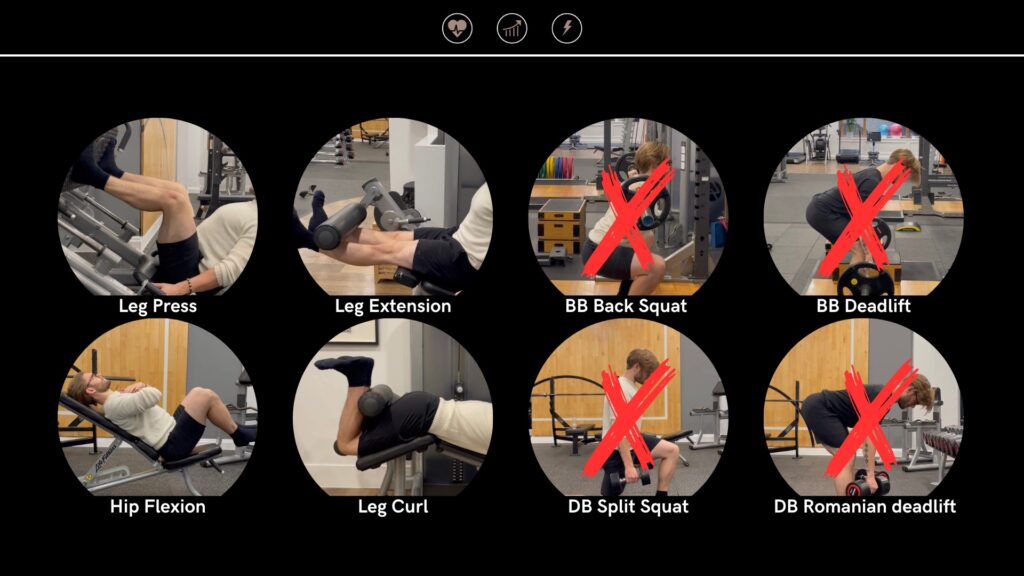
Anyways, hope this all helps and makes sense – it’s the FIRST of 2 stages I take clients through.
And if you follow it, you can expect results like Claudia…
She knew what she was doing in the gym, but spent 14 months:
- Losing muscle
- Losing strength
- Unable to workout
- Unable to do hobbies
- Feeling demotivated
- Feeling low energy
- Feeling frustrated
- Feeling weak
6 weeks in to the program, she was in the gym training 100% pain free whilst shoulder pressing 15kg dumbbells.
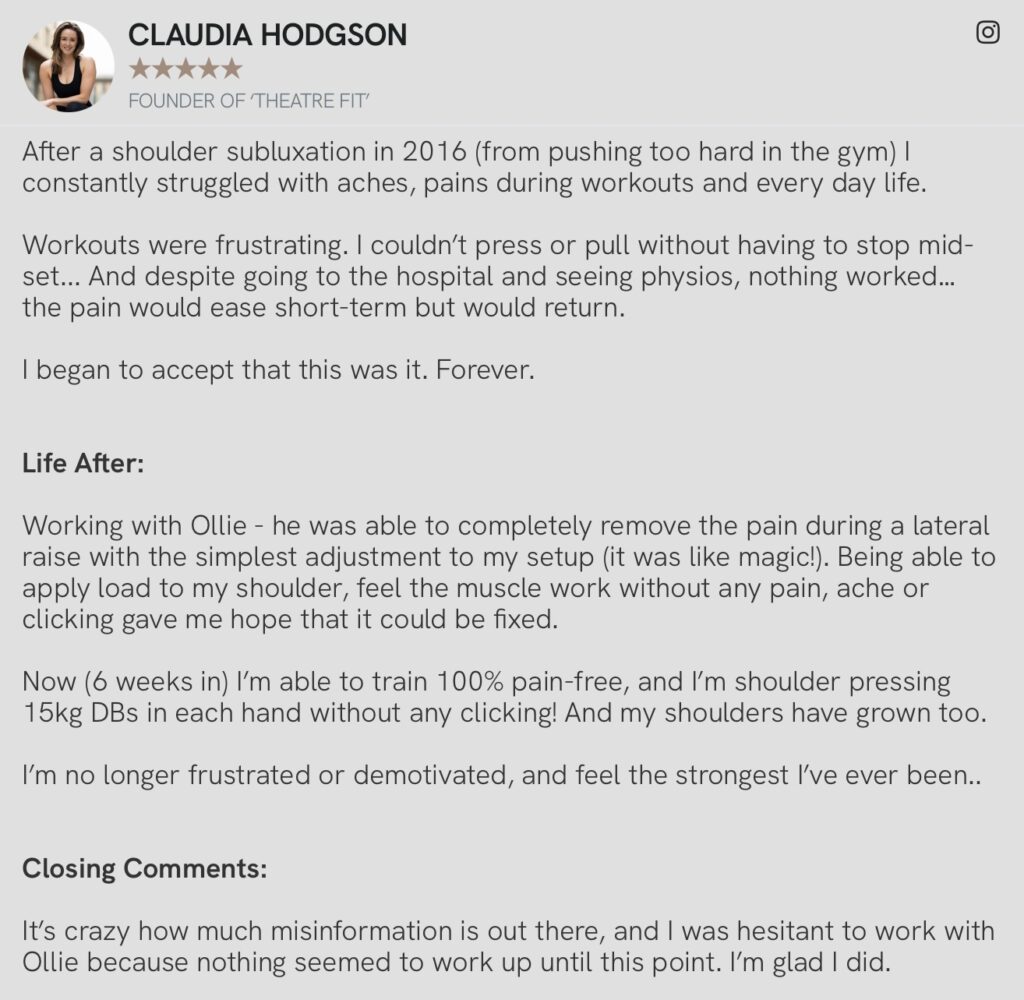
Have any questions about what you’ve just read?
Be sure to reach out – I’m ALWAYS here to help you where I can 🙂
Till next time my friend,
— Ollie



